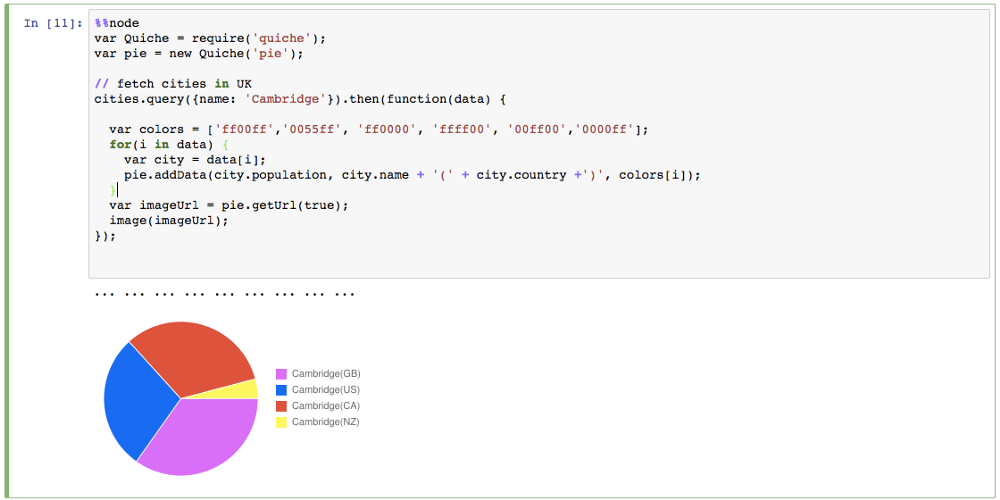NodeBooks
Python and Node.js code, in the same data science notebook.
Notebooks are where data scientists process, analyze, and visualize data in an iterative, collaborative environment. Having a scratchpad where you can write some code, iteratively work on some algorithms, and visualize the results quickly can speed the collaborative process.
As convenient as Jupyter Python notebooks are, sometimes it’s better to collaborate with tools others find more familiar. For many people, that means JavaScript, in the form of Node.js.
pixiedust_node is an add-on for Jupyter notebooks that allows Node.js to run inside notebook cells. In fact, it’s built on the popular PixieDust helper library.
Getting started
Configuration is only two short notebook cells.
Now you’re ready to fetch some data, in this case, from a Cloudant database.
Then use your favorite Node.js package to generate a data visualization.
In the context of a Jupyter notebook, you’ll see your chart rendered like so:

Projects
-
Sharing Variables Between Python & Node.js in Jupyter Notebooks
Medium | GitHubThey live apart and speak different languages, but these variables hold common values.
-
Mapping the Songs of Bruce Springsteen
GitHub | MediumAnalysing geospatial references in The Boss’s lyrics using data science notebooks and Node.js.
-
Visualizing Data with Jupyter Notebooks, PixieDust, and Compose MongoDB
Compose ArticlesConnecting to Compose MongoDB and creating rich presentations for your data inside a Jupyter notebook is made easier with PixieDust.
-
Nodebooks: Visualising Data the Node.js Way
Medium | GitHubGenerating charts in Python notebooks using only Node.js code (part 3).
-
Nodebooks: Sharing Data Between Node.js & Python
Medium | GitHubConnecting to a Cloudant database for analysis (part 2).
-
Nodebooks: Introducing Node.js Data Science Notebooks
Medium | GitHubPython and Node.js in the same Jupyter notebook (part 1).